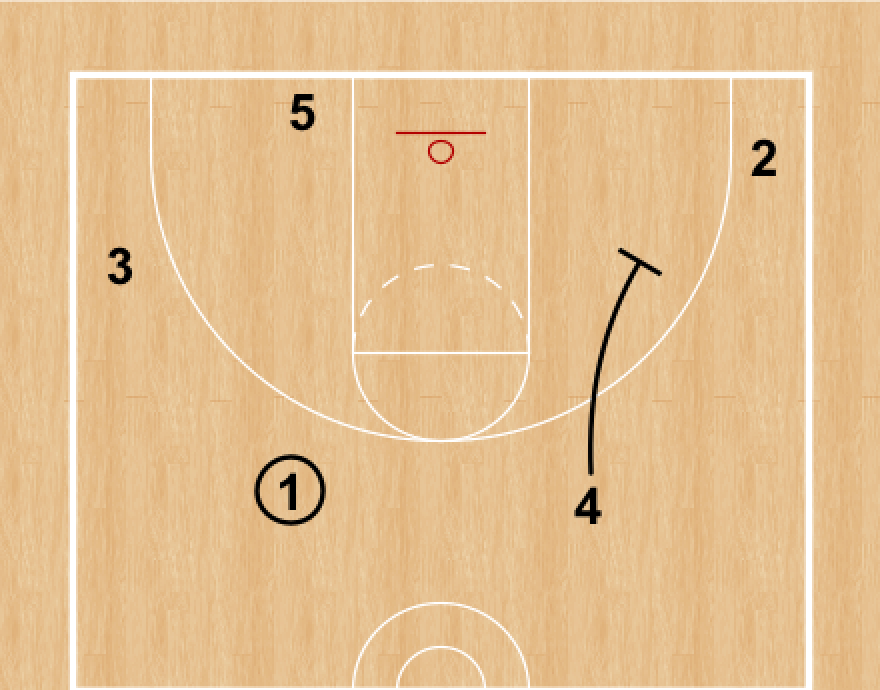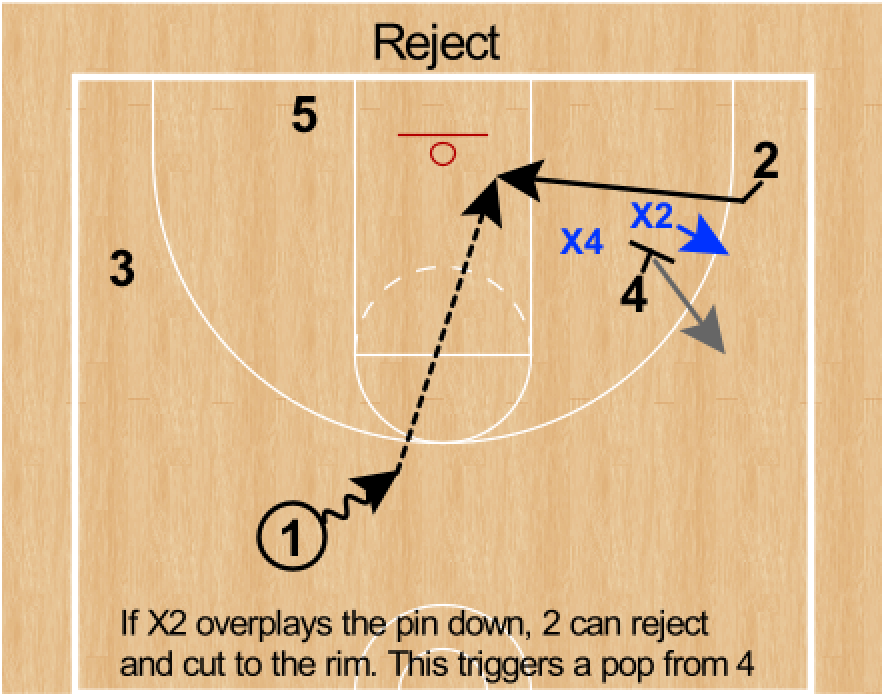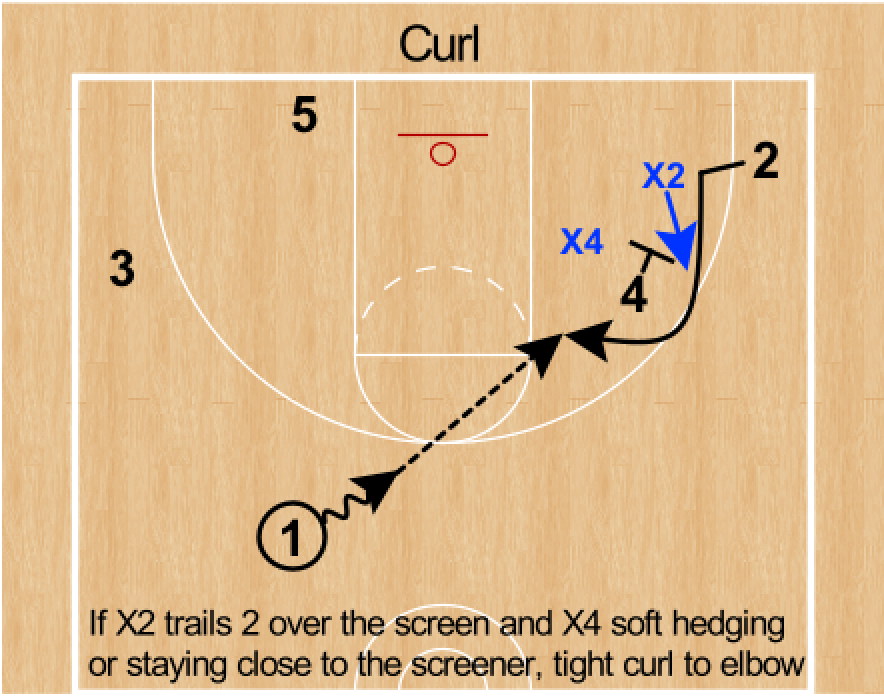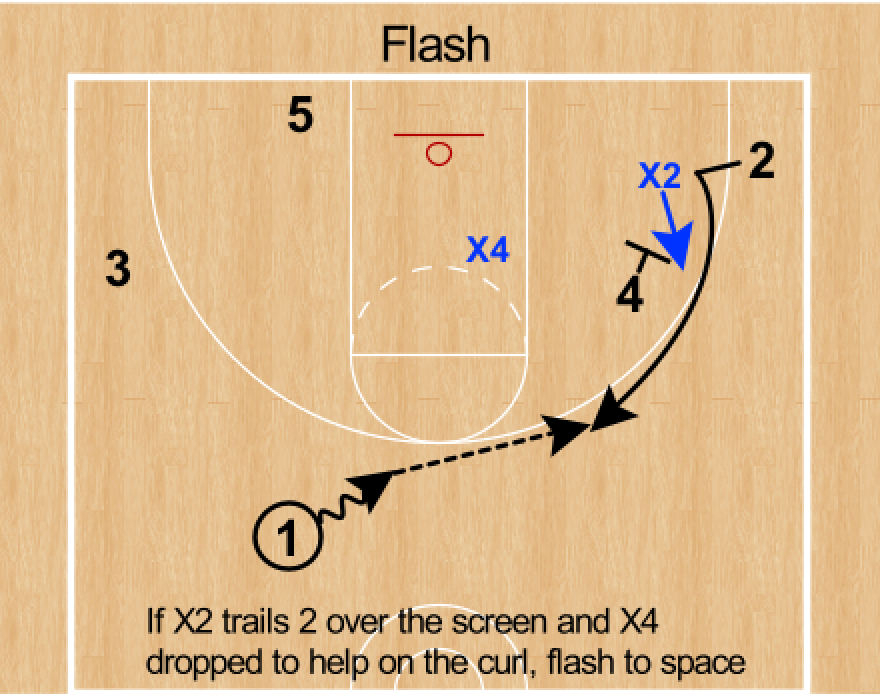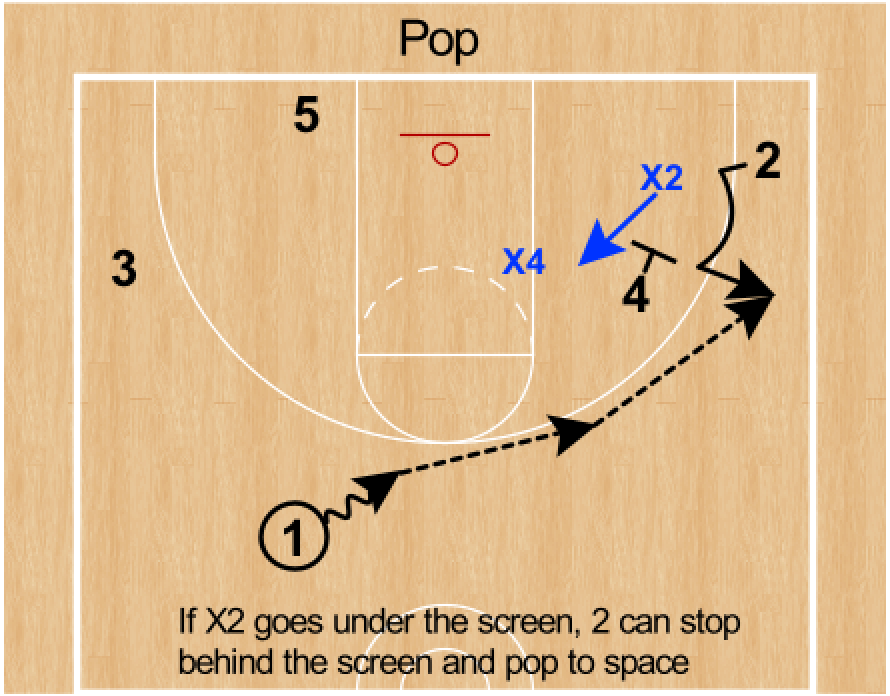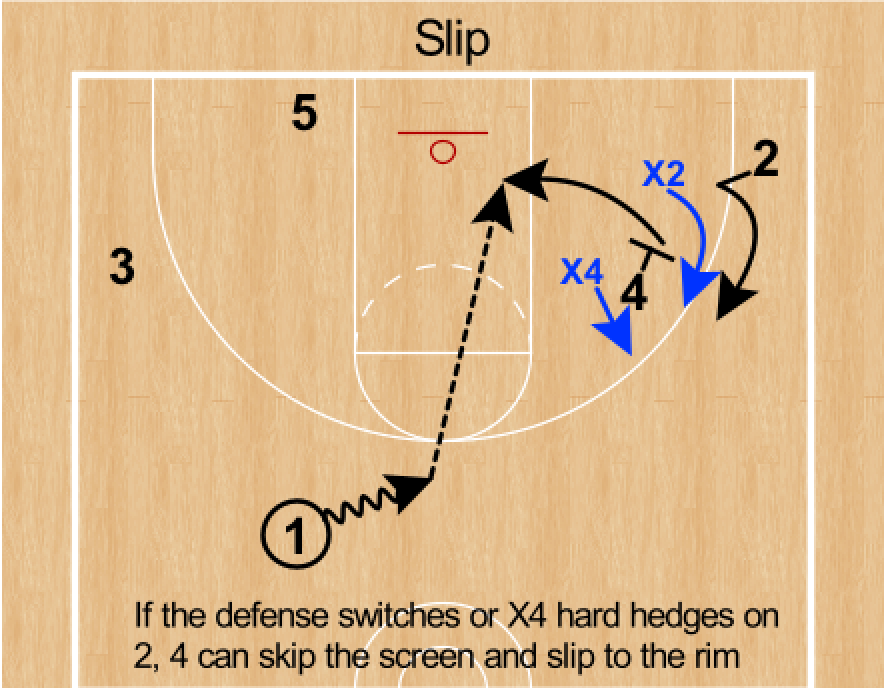Wide Pin Down Reads & Counters
What is a Wide Pin Down?
A wide pin down is an off ball screen set for a player typically located in either corner. The screener sets the screen so that it is angled towards or in line with the passer, and the player receiving the pin down is wider (further outside) than the screener.
Wide pin downs have always been popular, but we are seeing somewhat of a resurgence in recent years, especially in the NBA. Wide pin downs are often set for elite shooters and scorers like Steph Curry, Klay Thompson and Kevin Durant to name a few. Wide pin downs are a great way to create an open look for a shooter, get the ball to a scorer in the mid-range and flow into a 2-man game with the pin down screener.
When talking about a wide pin down, it is important to understand the spacing. The player setting the pin down typically starts high (in the slot) and the player receiving the pin down starts low (in the corner). The screener wants to set the pin down so the player receiving the screen catches the ball even with the wing if he uses the screen. Catching the ball even with the wing/free throw line creates space for the screener to potentially roll or pop to the corner after setting the pin down.
In this breakdown, we will cover all of the available reads & counters that are available within the wide pin down action.
Setting Up the Screen:
For the player receiving the screen, the biggest key to creating space is setting up his defender as the pin down is being set. The player receiving the pin down has two options; he can either use the screen or reject the screen. When receiving the screen, you never want to give away which options you are going with two early. Teaching players to start with the feet square to the pin down gives them the option to either use the screen or reject it, without giving away their decision to their defender. Rejecting the pin down, which we will also cover later, is a great way to keep the defense honest and guessing on the next pin down that is set.
If the defender chooses to use the pin down, he needs to get into this defender or nudge him to get his defender off balance. He then can sprint to use the pin down, and make one of the following reads based on how the defense plays it.
It’s also important to note that the player using the pin down screen must read two defenders. He must read his own defender and how he plays the pin down (under or over), and he must also read the screener’s defender (does he stay attached to the screener, is he dropped, etc.).
Reject:
If the defender guarding the player coming off the pin down anticipates the screen and overplays or if he turns his head and loses sight of his check, the player should plant his foot and reject the screen to the rim. Ideally, he would be open on the back cut for an open finish at the rim. However, if he is not open, the screener can pop back to receive the pass and you can flow into the next action.
Curl:
If the defender guarding the player receiving the pin down trails over the top of the screener, the player should tight curl around the screen. As he is curling off the pin down, he needs to read the screener’s defender.
In this case, the screener’s defender (X4) is soft hedging and staying attached to the screener, so the player has space to the inside (elbow).
Flash:
If the defender guarding the player receiving the pin down trails over the top of the screener, the player should tight curl around the screen. As he is curling off the pin down, he needs to read the screener’s defender.
In this case, the screener’s defender (X4) is dropped to help on the potential curl, so the space is towards the passer, and not the inside.
Pop:
If the defender guarding the player receiving the pin down tries to go under the screen, the player should should stop behind the screen and pop or push to open space along the perimeter.
Slip:
All of the above have been reads made by the player receiving the pin down screen. However, the “slip” is a read made by the screener setting the pin down.
If the defense switches or if the screener’s defender (X4) hard hedges or over helps on 2 as he comes off the pin down, the screener should slip to the rim looking for the pass.


